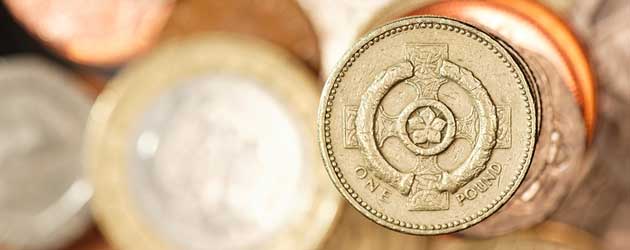
The Pound performed well against the majority of its currency peers last week as strong Service Sector output accentuated the recent optimism towards the UK economy.
GBP/USD is currently a cent higher than a week ago and GBP/EUR is nearly two cents stronger.
The Services Industry accounts for around 70% of the UK economy and last Tuesday’s 16-year high PMI print of 62.5 suggests that British economic output continued to accelerate during October and bodes well for another strong GDP reading in the fourth quarter. The report was especially promising in that it featured the best rate of new job growth since 1997.
The Bank of England’s forward guidance policy dictates that interest rates will remain low unless inflation doesn’t fall towards 2.0% or until Unemployment falls to 7.0%. The BoE currently expects to maintain its current record low benchmark interest rate of 0.50% until late 2016, but with UK growth figures printing significantly better-than-anticipated over the last few months the majority of investors predict that the UK Central Bank will be persuaded to raise rates sooner-than-forecast.
It is entirely possible that the BoE will bring forward its projection for a rate hike during its Quarterly Inflation report on Wednesday morning. Under this scenario the Pound would be expected to break through resistance at 1.2000 against the Euro (GBP/EUR) and the Sterling to US Dollar exchange rate (GBP/USD) could rally back towards 1.6300.
However, demand for Sterling could be impacted if Tuesday’s CPI inflation print comes in softly. Analysts predict that price pressures receded by -0.2% from 2.7% to 2.5% during October, but a weaker result could derail the Pound ahead of the Quarterly Inflation report.
Eurozone GDP to slow
It was a fairly bad week for the Euro last week as the European Central Bank cut its benchmark interest rate by 25bps to 0.25%. This reduces the potential return on investments denominated in Euros and therefore makes the single currency less appealing to traders. To top things off, Standard & Poor’s downgraded France’s credit rating by one notch from AA+ to AA.
Later this week it is predicted that Eurozone Gross Domestic Product will print at 0.1% for the third quarter, down from 0.3% in Q2. The report is unlikely to support the single currency because investors may take the deceleration in output as a warning sign. On the other hand, the fact that the currency bloc managed to retain growth for a second consecutive quarter could be seen as a sign of stabilisation.
Quiet week for American data
The US Dollar came into demand towards the end of last week’s session as US GDP printed strongly at 2.8% YoY and the latest Non-farm Payrolls report showed a stronger-than-anticipated labour market improvement of 204,000 during October.
There is very little on the economic docket in the States this week. Incoming Federal Reserve Chair Janet Yellen’s confirmation hearing on Thursday afternoon could prove pivotal for the US Dollar if any clues are given as to future policy direction. However, this is fairly unlikely and little fresh information is likely to be disclosed.

Comments are closed.